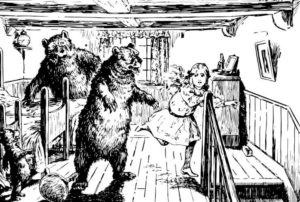
Do you think this will be a “Goldilocks” economy? That’s one where it’s not too hot, and it’s not too cold, it’s just right. In The Wall Street Journal, James Mackintosh discusses the potential that investors are currently witnessing a “Goldilocks” economy, writing:
The bull case is that inflation was, after all, transitory. The Fed will realize that it doesn’t need to be hawkish and rates will come down without unemployment needing to rise much, if at all. Goldilocks says to go ahead and buy stocks.
Fed Chairman Jerome Powell has stopped challenging the bulls, twice in the past week choosing not to push back hard against the recent stock-market rally. However, he has reiterated that the strong jobs market means rates will have to be higher for longer, a message the bond market has started to absorb but stocks seem to be ignoring.
It is true that headline inflation is being dragged down by falling energy prices, and goods prices are coming down as postpandemic demand returns to normal. But Mr. Powell still sees inflation danger in core services, where prices are particularly sensitive to higher wages. Strip out rent from services, and prices were up 4.9% on an annualized basis in December—a monthly rise surpassed only twice between the 2008-09 recession and the start of the pandemic.
Yet wage costs in leisure and hospitality, which ought to be most affected by the postpandemic demand to party and also most directly feed through into prices, rose more slowly than in private business as a whole in the fourth quarter. Something odd is going on.
The bear case is that much of this is just noise in the data.
Sure, some of the prices that soared amid pandemic shortages, such as used cars, will fall back to earth, but overall demand in the economy is running ahead of supply. That means underlying prices will keep rising too fast, and the Fed won’t risk cutting rates—unless there is a recession. On this bearish view, a stronger economy means higher rates for longer, which is bad for stocks. A weaker economy might mean lower rates, but only if it brings recession and falling profits—also bad for stocks.
Part of the disagreement between bulls and bears is about how sensitive wages are to unemployment, a relationship known as the Phillips curve—named after the New Zealand economist who first charted it. After the financial crisis of the late 2000s, the Phillips curve flattened, so higher demand for workers did little to push up wages. But as Gerard Minack of Minack Advisors points out, the curve seems to have shifted, with wages rising by more for any given level of unemployment than they did between 2008 and the pandemic. With unemployment so low, wage pressure should be expected if there has truly been a change in the wage-joblessness relationship.
Regular readers won’t be surprised that I lean toward the bearish view. As Minneapolis Fed President Neel Kashkari told CNBC on Tuesday, it is hard to imagine that strong jobs growth is compatible with weaker wage growth.
Read more here.
